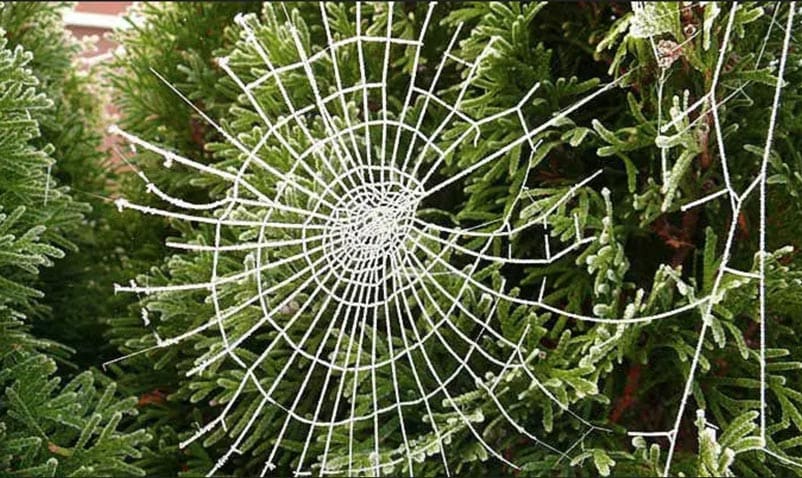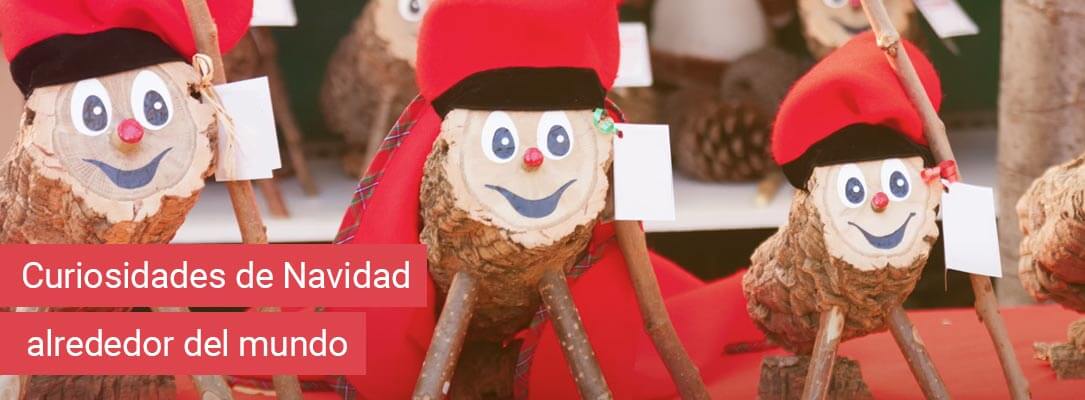It was last year when we started to list down some Christmas curiosities from around the world. We were celebrating the holidays with the impact of the pandemic, and it was unusual. Now, for the second year in a row, we have a lot of preventive measures and restrictions because of the difficult health situation.
But let’s not get bogged down by it and instead let’s consider the peculiar (and surprising) side of the situation. Because celebrating Christmas in a different way is very common everywhere. For example, in Ukraine it is customary to decorate the tree with spider webs, in Peru people have fist fights and in Portugal some people set aside a place at the table for the dead ones.
To start this curious list, here’s a very local tradition in Catalonia.
The tradition of Caga Tió
It may seem incredible but Santa Claus is almost unknown in Catalonia. When Christmas comes, children only have eyes for the Tió: a wooden log with a smile on its face, with two wooden legs and a barretina, the typical Catalan bonnet, on its head. And the most incredible thing is that instead of bringing presents, the log “shits them out”.

From the beginning of December, families place the Tió in a corner of the house, wrapped in a blanket to keep it warm. The youngest members of the family make sure it has food every day. In fact, the more the better, because that way the Tió will be more generous.
On Christmas Eve, after dinner, the most anticipated moment arrives and everyone gathers around the Tió. The children grab a stick each, and while singing a catchy song, they hit the trunk, “helping” it to shit the desired gifts under the blanket.
Yes, looking at it from the outside, it may sound very strange to someone who’s not from Catalonia or Aragon. But that’s the magic of Christmas, right? I mean, If a chubby old man rides a sleigh pulled by flying reindeers, why can’t a smiling magic log shit out presents? 😉
Decorating the tree with spider webs in Ukraine
It may look like Halloween, but we assure you it’s Christmas… Instead of ornaments, tinsel and stars, Ukrainians use decorations that mimic the natural formation of spider webs, glittering with dew.

The tradition goes back to a folk tale about a poor widow who could not afford to decorate a tree for her children. Legend has it that the spiders in the house took pity on the family’s plight and spun beautiful webs all over the tree. The children woke up on Christmas morning and were delighted that the tree was all decorated.
One of the children opened the window and the sun slowly streamed through the house, all the way to the Christmas tree. Then the cobwebs glowed a shimmering silver and gold, making the occasion magical for this family. From that day on, the widow never felt poor again, and was always grateful for all the wonderful gifts she already had in life.
The traditional Christmas fight in Peru
Are you one of those who get anxious every year just imagining the ordeal of putting up with your brother-in-law’s jokes at the family dinner? Well, read on, my love…
In Peru there is a curious way of resolving conflicts and misunderstandings on Christmas Day. It is a ceremony known as “Takanakuy”, which in Quechua means “hitting each other”. It is usually held in a public square set up for the occasion and is attended by all the villagers.
Whoever has a conflict to settle stands in the centre of the arena and names his opponent out loud. The person in question must stand in front of him/her and for three minutes they are allowed to fight each other (including punches and kicks).
Duels are used to settle old quarrels or simply out of a desire to participate in this tradition. Of course, always within a festive framework. Once the problems have been resolved, everyone present enjoys the traditional food, drink and dance. The opponents will often go off together to drink alcohol, which, according to local custom, helps to ease the pain of the blows.
This very different form of celebration has less to do with Christmas and more to do with an ancient indigenous tradition linked to the winter solstice. After the arrival of the Europeans this custom was maintained, along with those of Catholicism. Although it was initially performed mainly in the south of Peru, today it has moved to other parts of the country, even to some neighbourhoods of the capital.
Extra cutlery at a Portuguese Christmas dinner
There are many similarities between Spain and Portugal in the way we celebrate Christmas. But there are also some traditions that are different, such as food.
At Christmas Eve dinner, also known as “Consoada”, you can’t miss cooked cod or stewed octopus. For dessert, the “rabanadas”, similar to the sweet French toast, or the famous “Bolo-Rei”, a kind of a king cake. Well, so far nothing very unusual, right?
The curious thing about the Consoada is that in many homes the family leaves a free spot at the table, with the corresponding cutlery and plates. This tradition, which is performed from north to south of the country, including the islands, has a different meaning in each place.
For some, leaving a place at the Consoada allows those who have died during the past year to enjoy their last Christmas Eve dinner with their relatives. Others do so in the belief that their deceased relatives, by attending the dinner, will take away with them any evil spirits that may inhabit the house. There are even those who believe that the Guardian Angels of Jesus have a sweet tooth and will come to eat the many sweets that are served that night.
Another thing that is done on Christmas Eve is to go to bed without clearing the table of the leftovers from dinner. By doing so, it is believed that the souls in purgatory will come to feed on the leftovers from the Consoada.
Hiding the brooms in Norway
During the holidays you don’t usually think about cleaning supplies until the celebration is over, do you? But in Norway, when Christmas comes, many people focus on brooms.
Norwegian folk culture is inspired by many pagan traditions and customs. One of these beliefs is that on Christmas Eve evil spirits and witches come out to do their thing, frightening and disturbing the unprepared. Therefore, for a superstitious Norwegian, the best thing to do is to take all the brooms in the house and hide them. This prevents naughty witches from stealing them to fly away on.
Another Christmas curiosity in Norway is the traditional rice pudding in which one almond is hidden among several portions. The person who finds this nut in their portion is rewarded with a marzipan sweet in the shape of a piglet. Oh, and a small amount must always be reserved for gnomes called Nisse. These little creatures are believed to leave gifts if their bellies are full, but they play pranks and cause trouble if they don’t get their ration of rice pudding.





